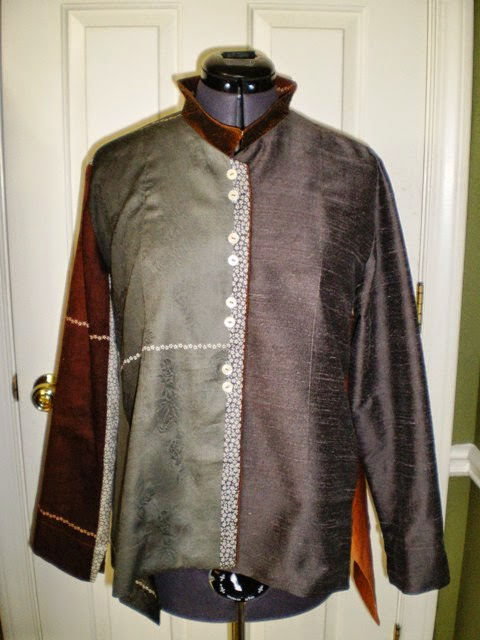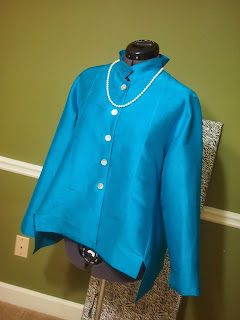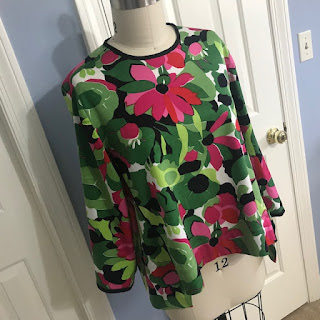The Liberty Shirt is one of the most popular patterns ever published by the Sewing Workshop. I have noticed that other pattern companies have similar styles, but the one from TSW is my favorite.
When it was first published, I made this one.
My next one was made in this gorgeous silk shantung. Since it is fancy fabric, I do not wear it as much, but I love the look of it for a dressy occasion, maybe with black silk pants. I made no changes to this one - instead I let the cool design and the striking solid colored fabric shine.
The next time I made it, I used a cotton shirting, cross-dyed in black and white, so it reads gray. This fabric was not fun to sew, as I recall. I behaved like a silk in preserving all areas where I needed to unpick something. And it wrinkles like crazy. I replaced the usual collar with one from TSW's Now and Zen shirt pattern. I used the double collar.
I have made a white version more than once, each with slightly different details. The one below is made in a pretty textured cotton. I created a stand collar to replace the usual one in the pattern.
Evidently I made one in this linen knit. I say, evidently, because I have forgotten all about it. It looks great on the dress form, but I do not like to wear linen knits. They tend to be flimsy and cling to every bump and bubble on my torso. So I expect I gave it away pretty soon after completing it. The significant change in this one was to convert it from a button up top to a pull over. It is such a wonderful color.
The second white shirting version is below. Based on a tutorial from Linda Lee, I used the neckline from the MixIt shirt, omitted the collar, and made the sleeves 3/4 length. It is not visible in the picture, but I added one chest pocket.
My next version was a sweater knit pull-over. I really like this one. The fabric is what Linda Lee calls boucle. It is a wool/rayon blend and a little scratchy. But I always wear it over something else. Other than making it as a pull-over, I made no other changes. I accented those cool front seams with hand-stitch.
My next version was another pull-over, this time in a silk piece with a little lycra. I used black binding to finish the neck and sleeve hems. And I added black piping to the front seams.
And now, here is my latest.
The fabric is fine Japanese cotton from Nani Iro. It is a double weave and super soft. I bought it on a recent trip to NC. My grandson lives there. The fabulous Mulberry Silks and Fine Fabrics is nearby and a must-see for me.
I accented it with a piece of tana lawn that looks sort-of like Liberty of London fabric. I bought it at the local shop, Gail K, and so I do not really know. The piece was only 36" wide, so I suspect it is not Liberty of London. I have enjoyed using it as an accent on various pieces.
The neckline finish is a variation on the Egyptian shirt pattern from Folkwear. It is a shaped, reversed facing. I also used the tana lawn as a flat piping in the forward seams, as well as for sleeve hem facings.
This fabric has a sweet selvedge. So I hand-stitched that down the back to create a little bit of interest there.
I have already enjoyed wearing this. The Nani Iro fabric is so soft, but the flip side is that it sticks to my high hip fluff. That's OK.
Now I am thinking about my next Liberty hack. I've seen vest versions posted online. And I have a piece of nice fine whale corduroy that would be perfect.
I suppose there might even be a dress variation left. Or a longish duster. Or. Or. Or.























